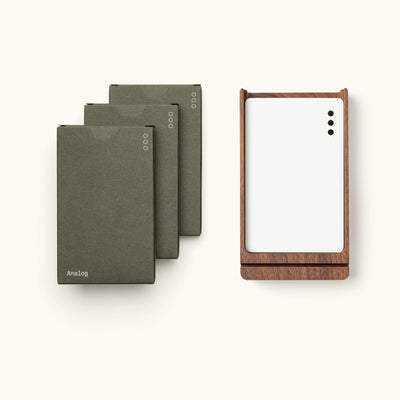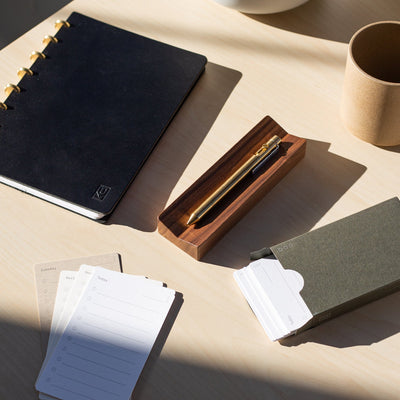The framework of Analog can be learned in just a couple minutes but can also be customized to however you like to work. Once you build the daily habit, the system itself feels almost invisible.
How to use Analog
Start with a Today Card
Each day write up to 10 things you want to get done. If you use a digital tool to track your work, physically copying down your tasks gives you a tangible, distraction-free view of your priorities.
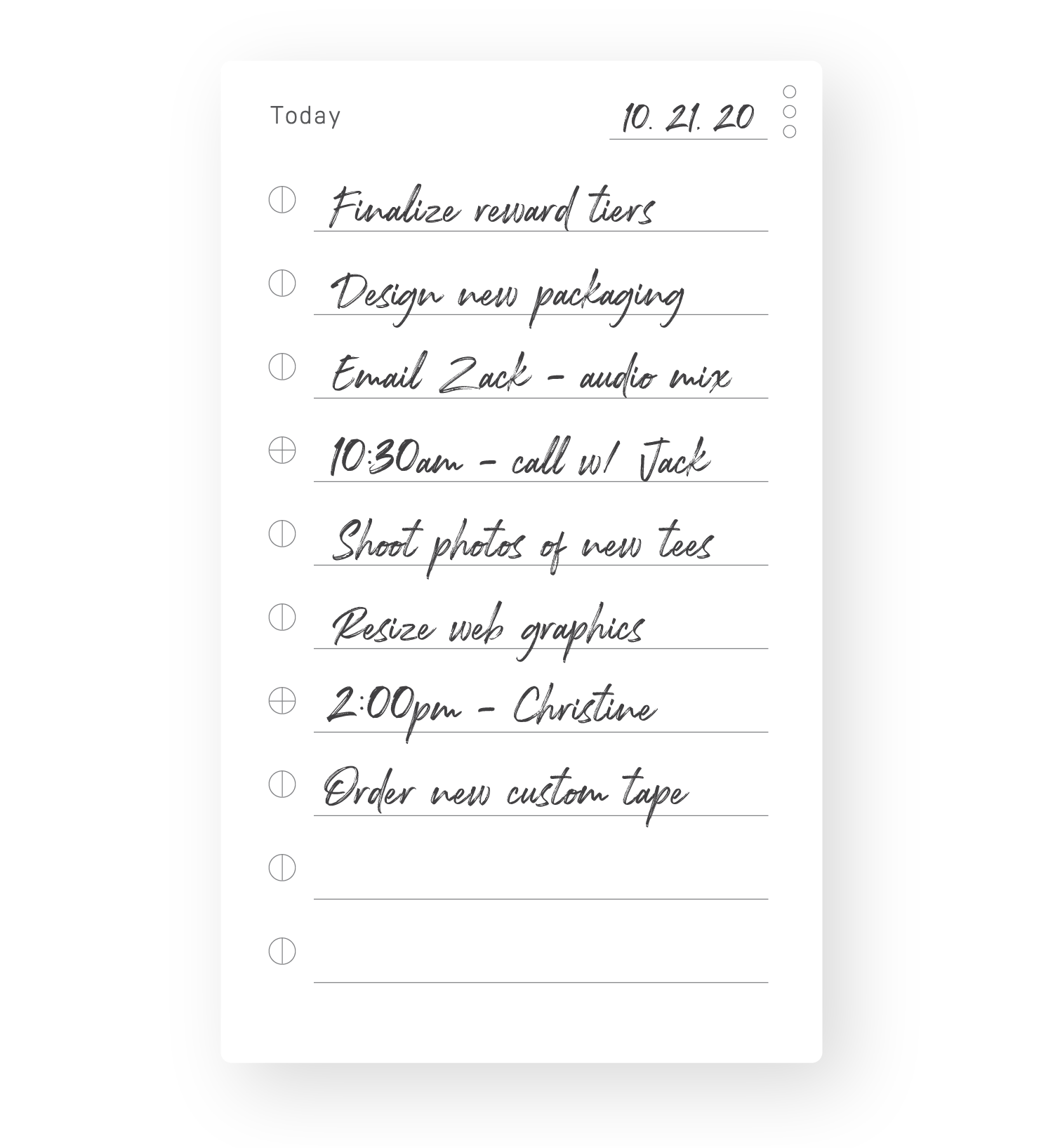
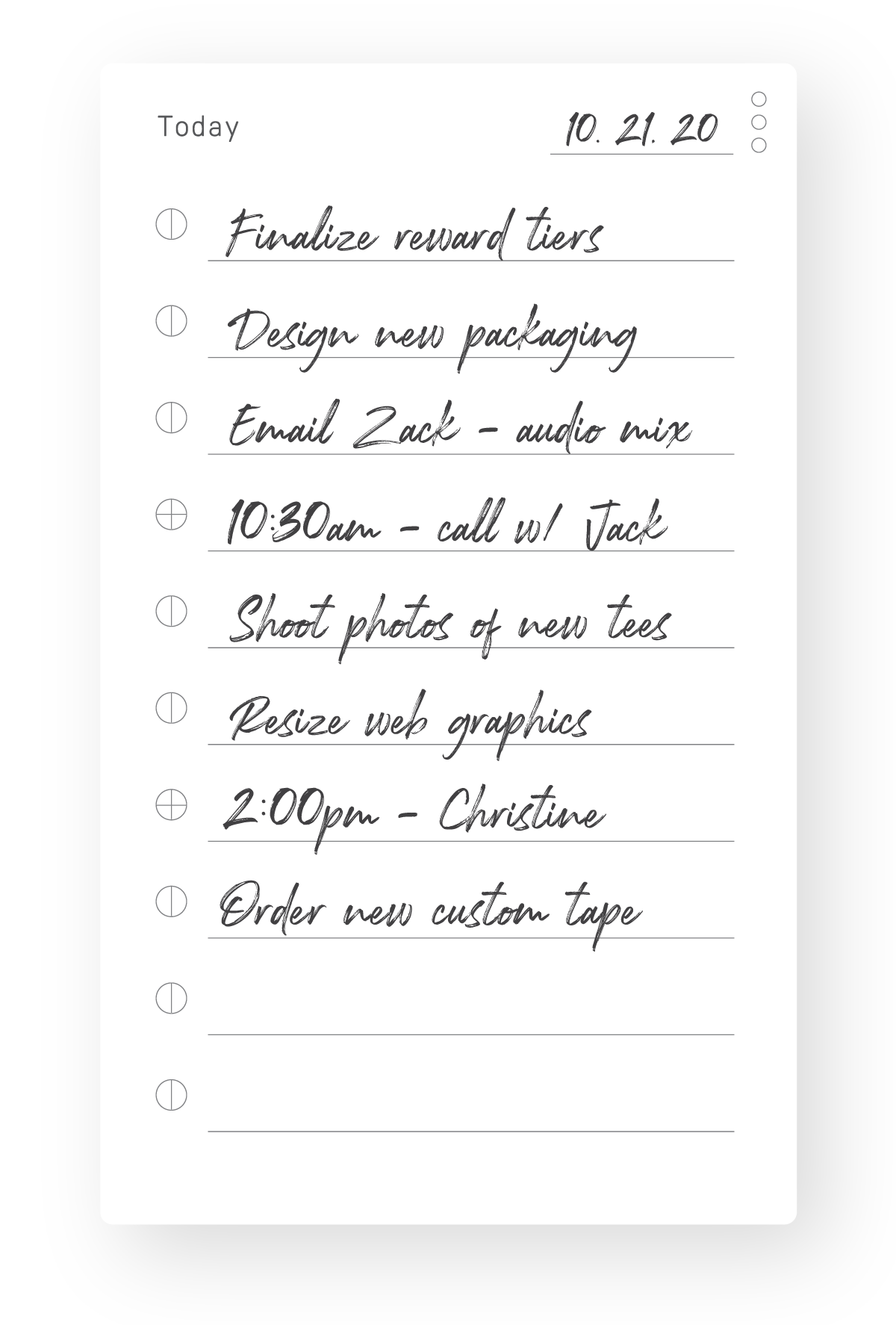
Use Next Cards for tasks that can wait
Think of your Next cards as your on-deck circle for important tasks that need to get done, but not today. Use this list to help you fill out your Today card.
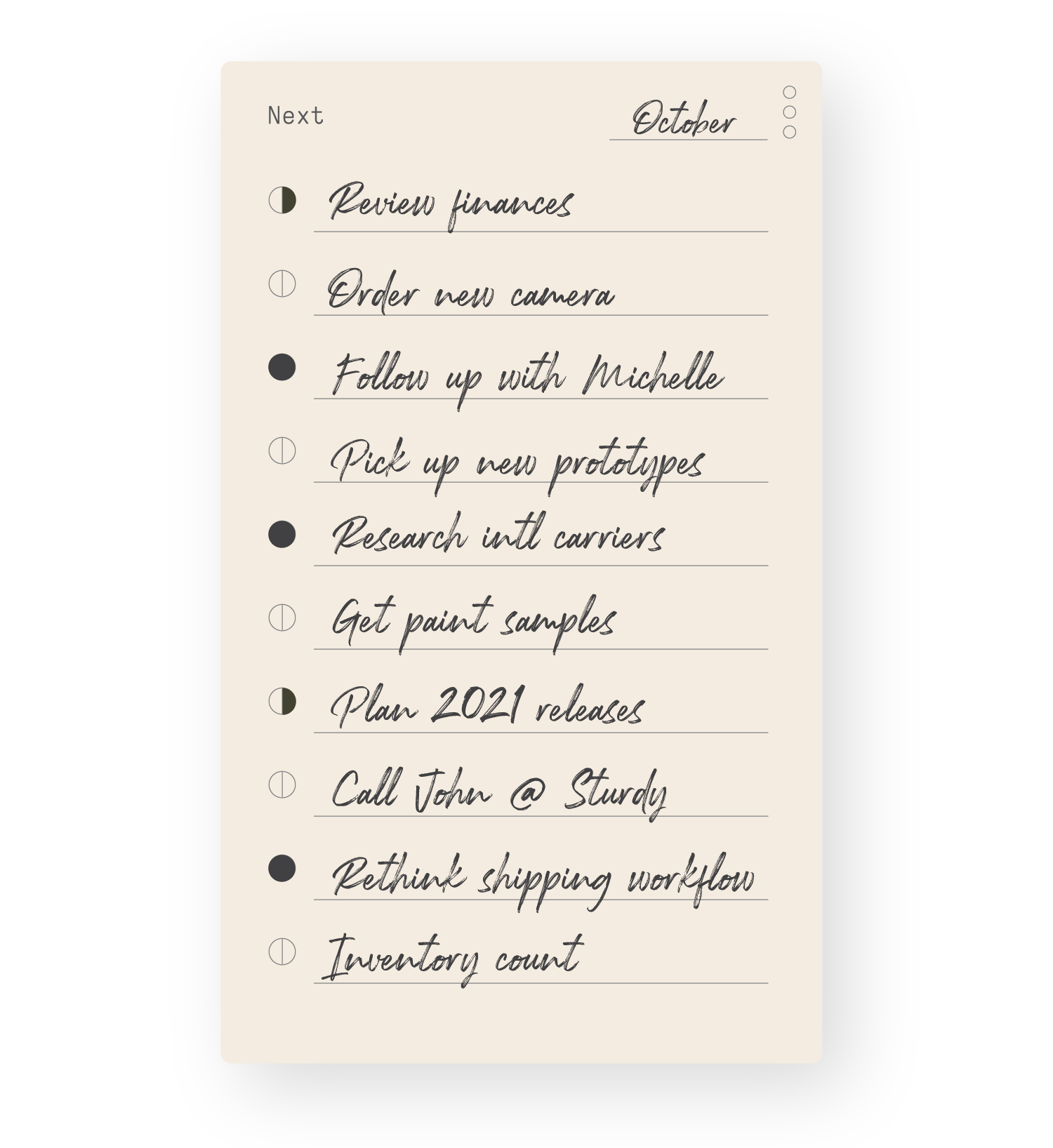
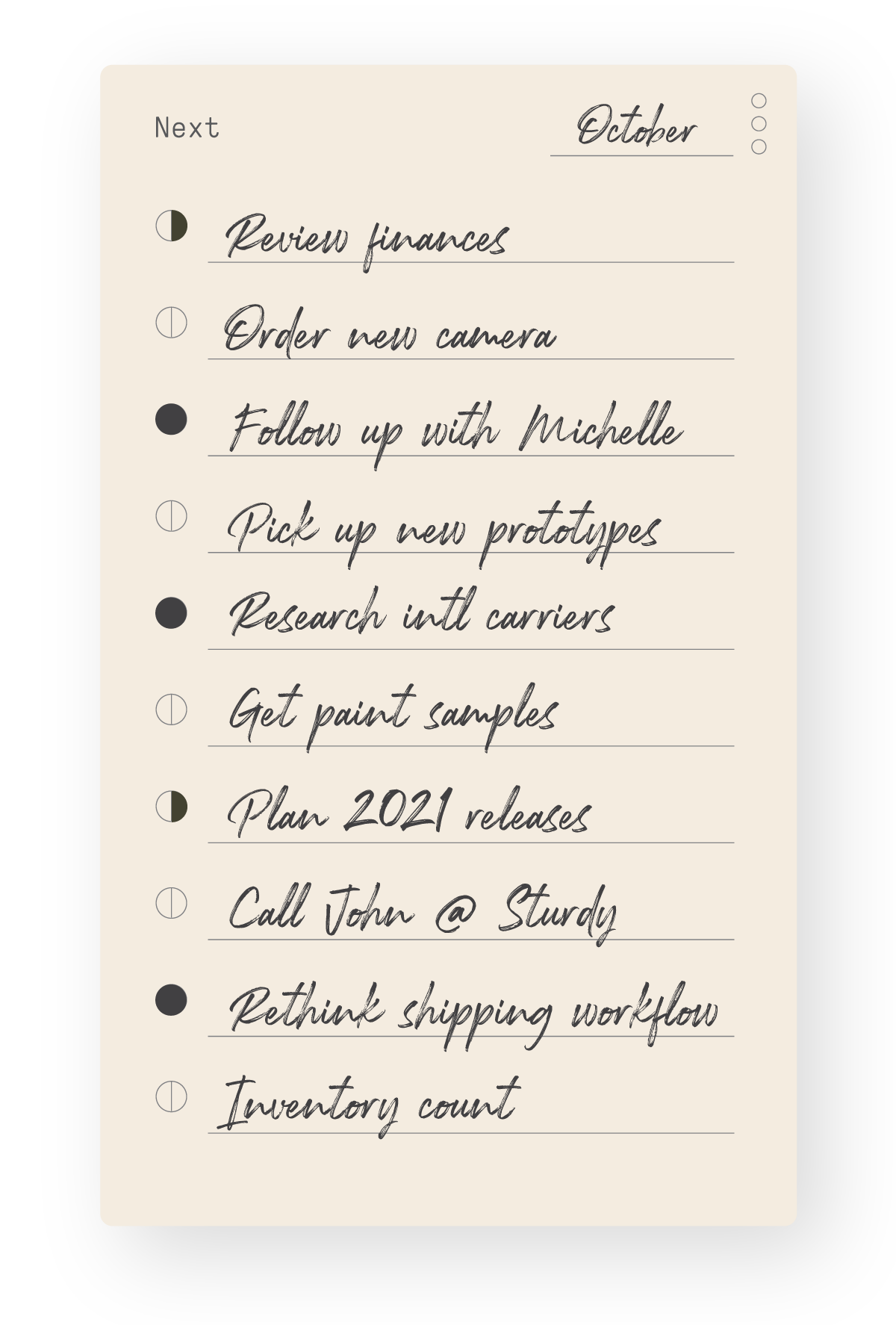
Capture ideas on Someday Cards
Use these cards to write down any random ideas, aspirations, and goals. Capturing allows you revisit in the future and decide whether or not to take action on them.
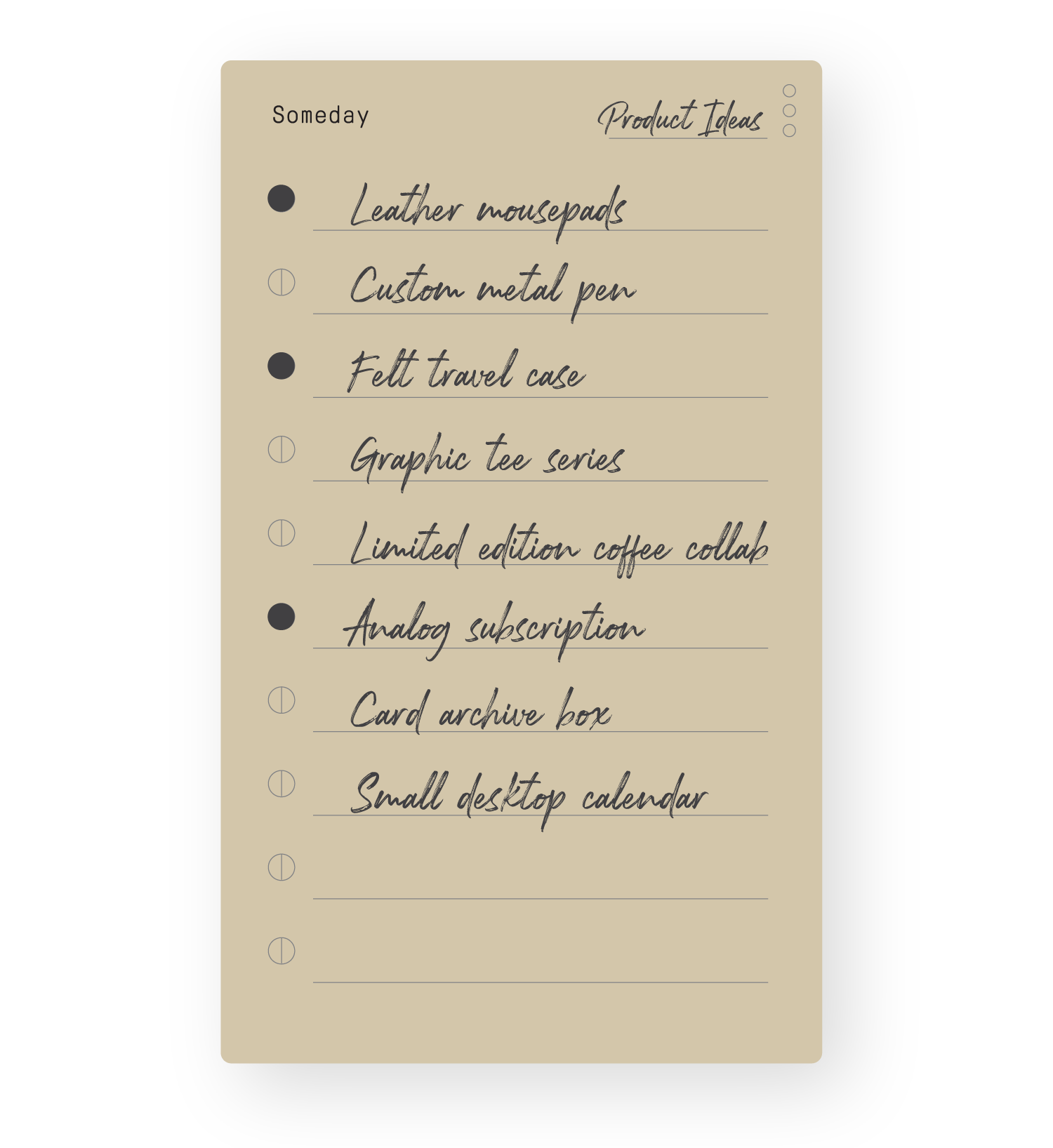
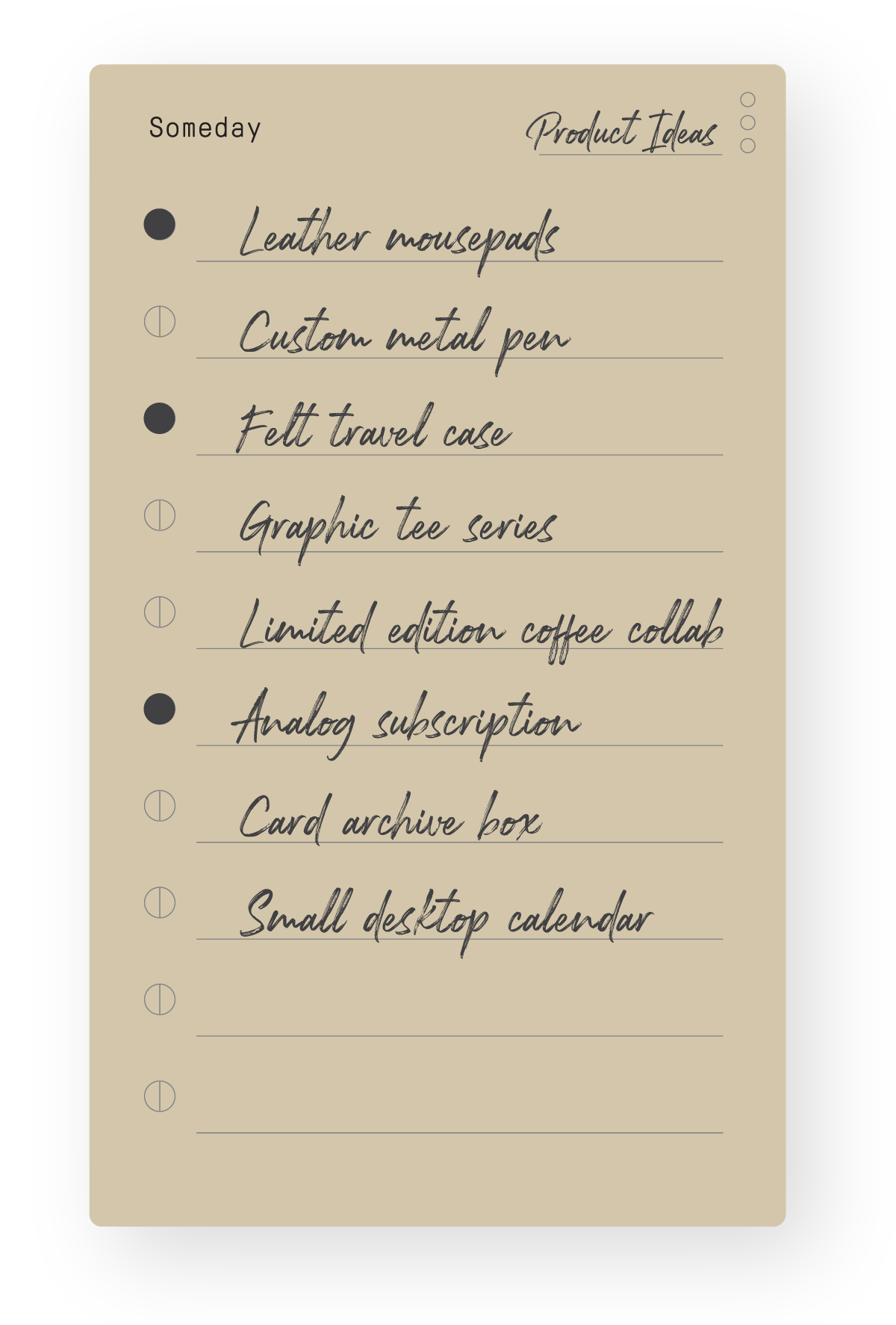
Task Signals
Throughout the day, mark each task as completed, in progress, or delegated. Feel free to create your own symbols
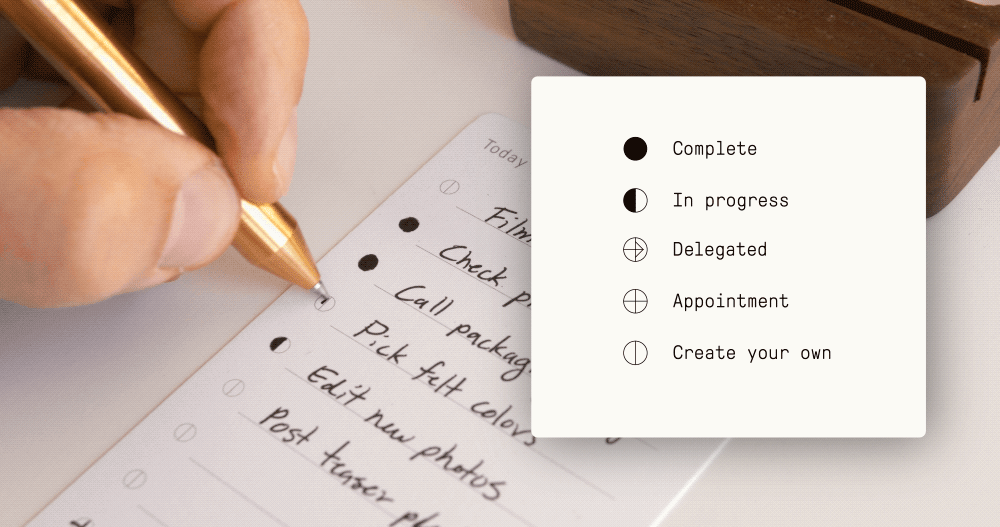
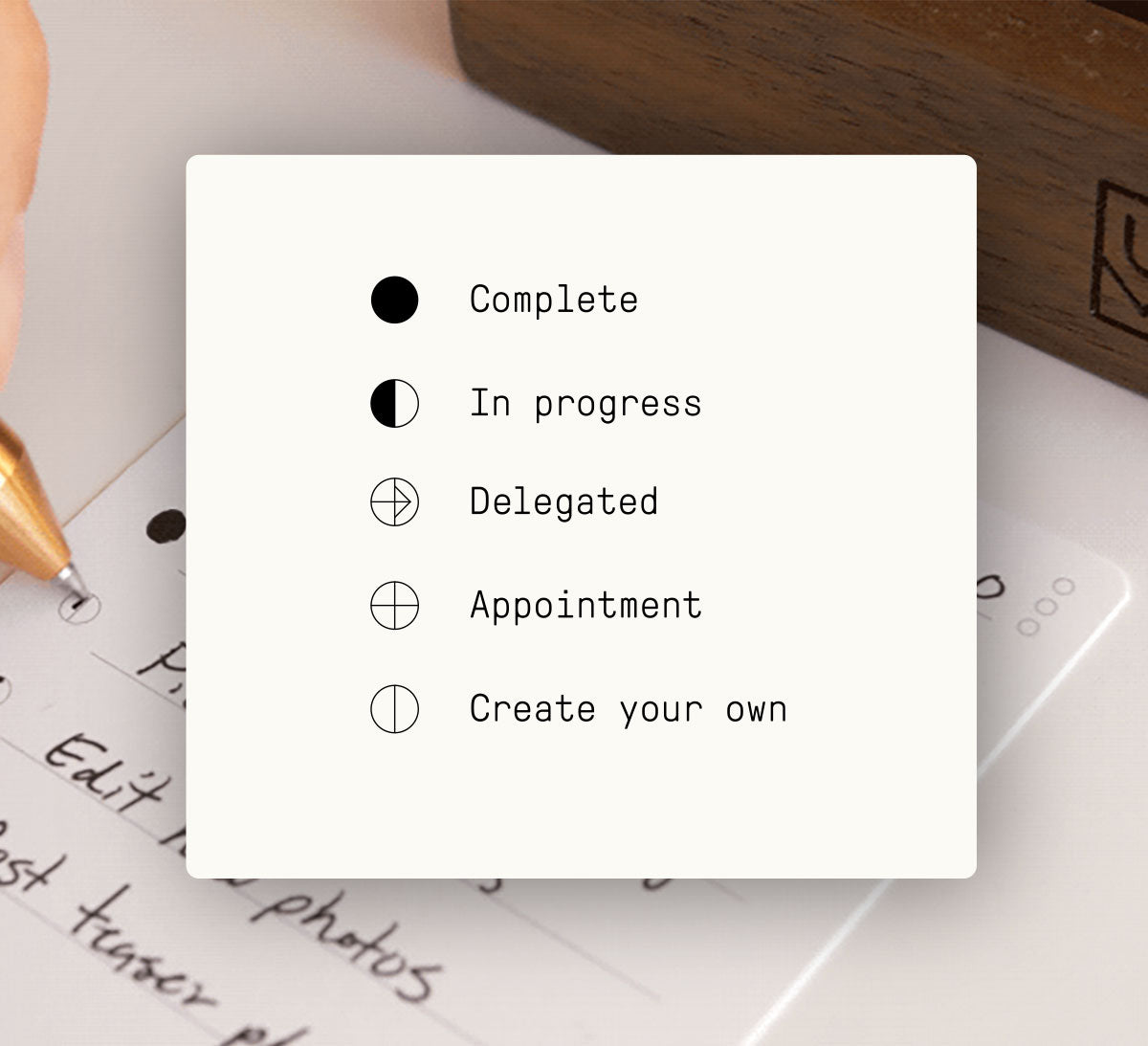
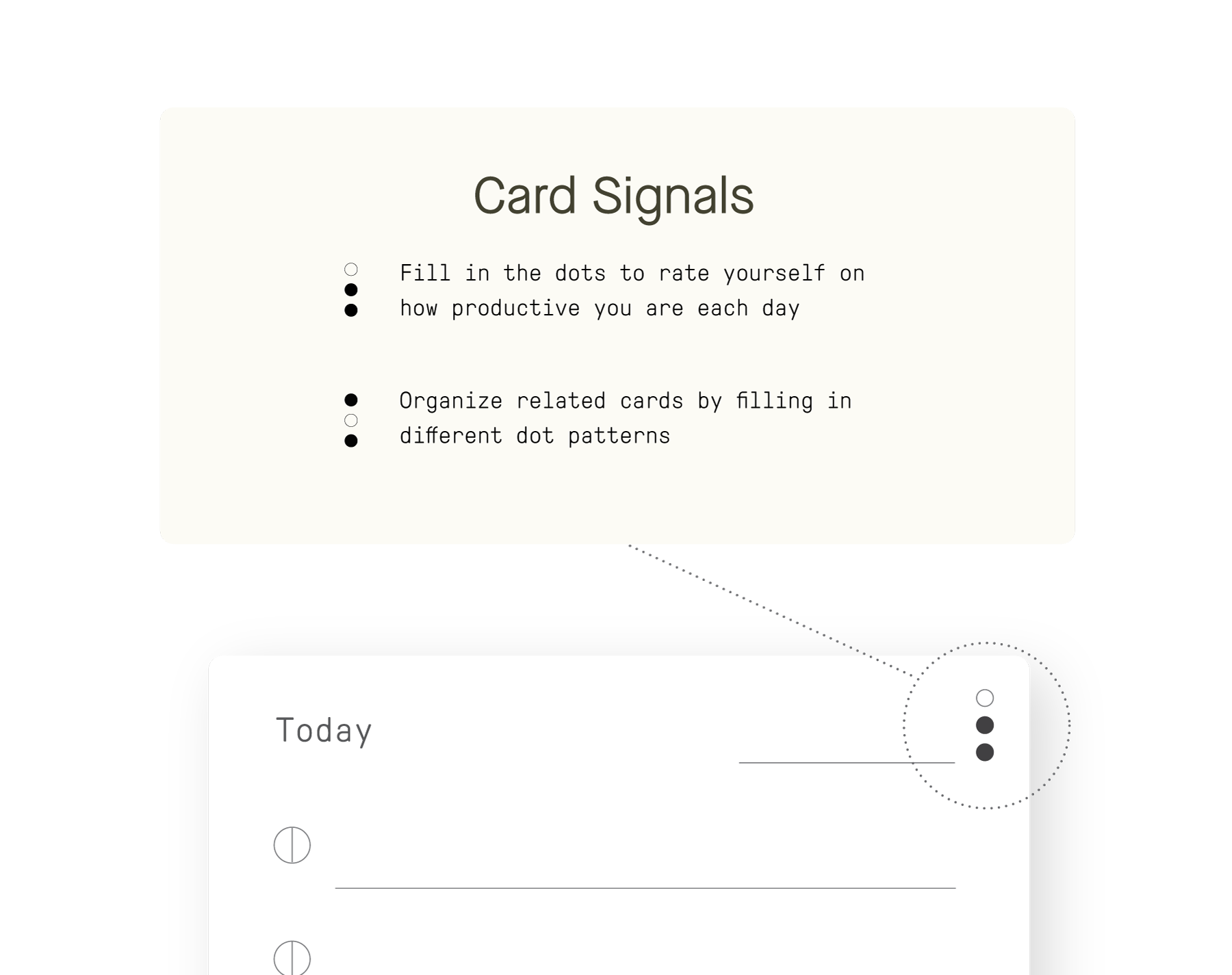
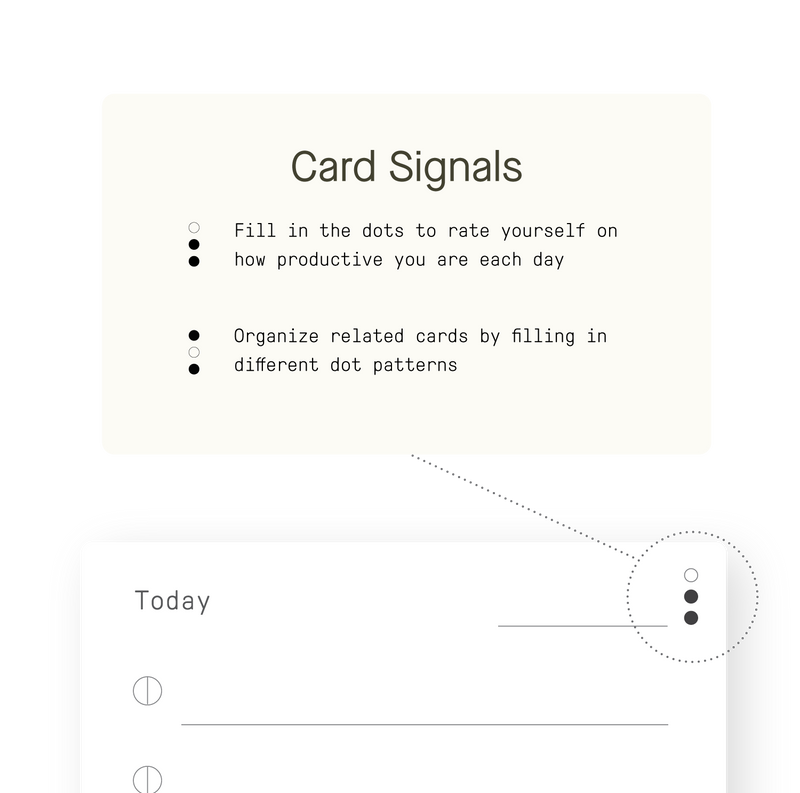
Transfer Unfinished Tasks
At the start of the next day, carry over any unfinished tasks onto a new Today card. Or transfer these to a Next card if they can wait.
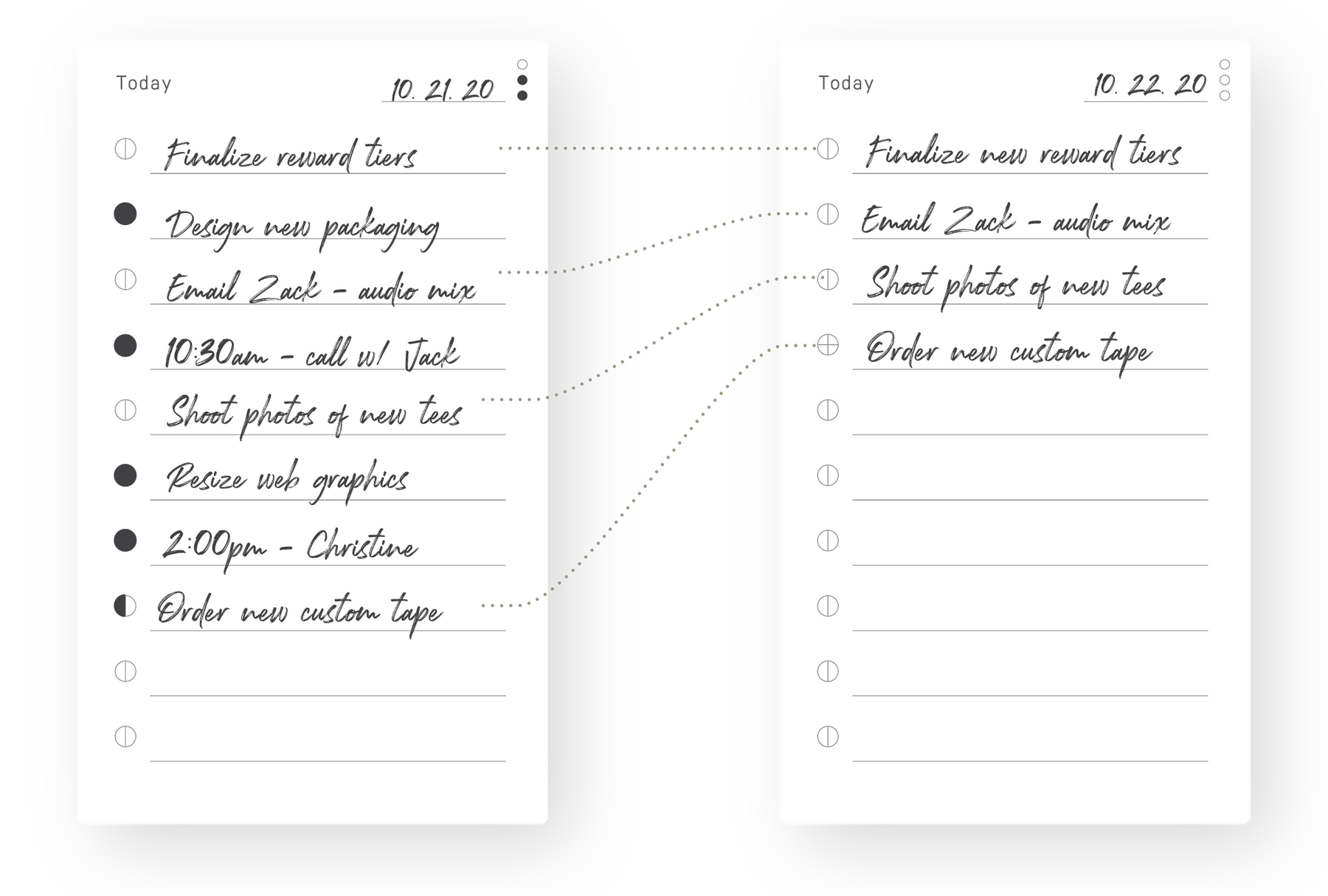
Flip it Over
Use the dot grid pattern on the back of the card to take notes, jot down ideas, or sketch ideas.
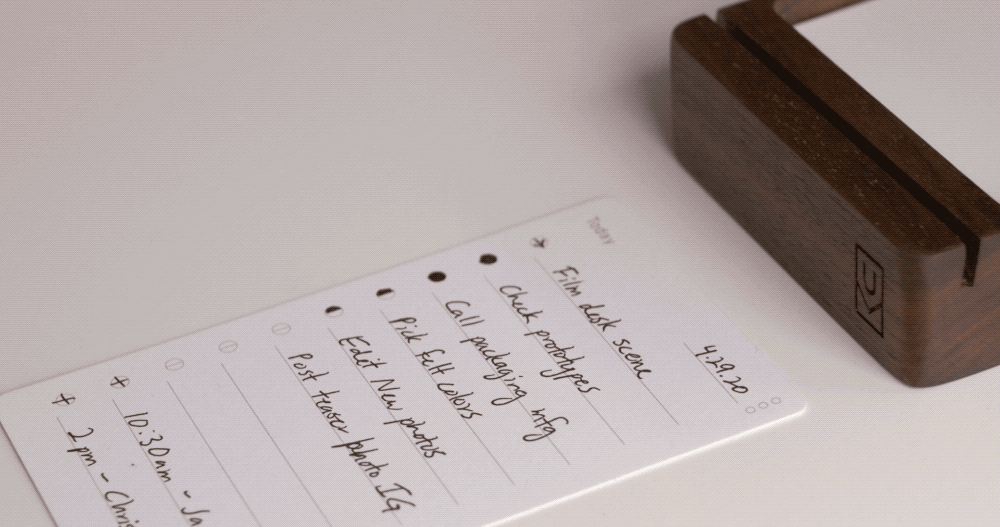
Slide & Store
At the end of the day, slide your Today card into the back of the card holder under the stack of cards.
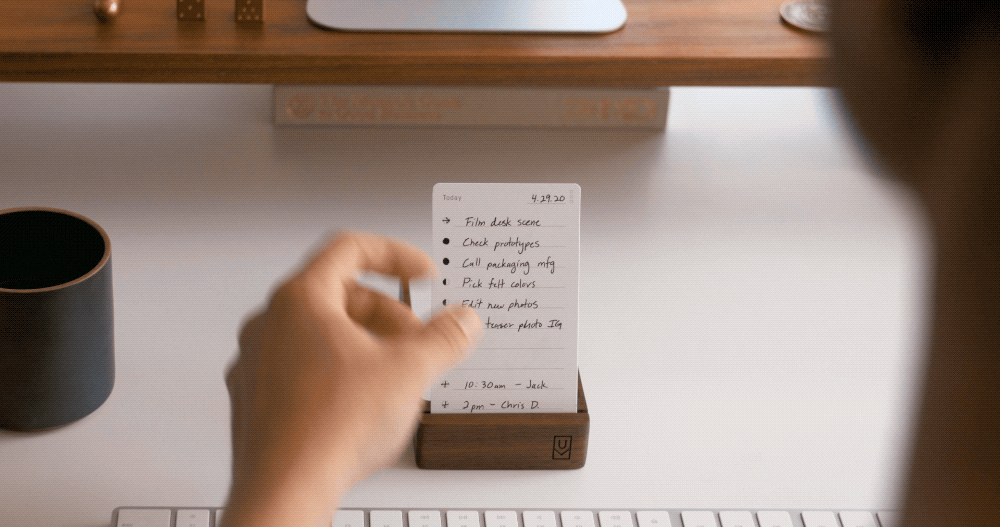
Tips & Tricks
Planning Ahead
Try writing down your tasks for the next day at the end of your day so your card is pre-filled for the next day
Use Action Verbs
Instead of just writing “New hats” try to use action verbs for each task. For example, “Photograph new hats” or “Order new hats.”
Organize with Color
Use different color pens for different types of tasks. Or use a highlighter to mark your highest priority tasks.
Brain Dump
Use the back of the card to do a quick brain dump to sort through all of the possible tasks before filling out your task for the day.
Time Block
Write allotted time increments next to each task so you can effectively schedule the hours in your day.
Daily Review
Review your Next and Someday Cards while you are filling out your Today card. Transfer any tasks that may have become higher priority.
Project Headings
Add project headings on your Next and Someday cards to keep tasks organized by project.
Start Fresh
Use a new Today card each day rather than working off of the previous day’s card. A clean slate allows you to reevaluate your changing priorities.
Think Small
Don’t try to fill in all 10 tasks on your Today card. Sometimes it’s better to start small and focus in on only a few important tasks.
Have a trick to share?
Send us your tip →FAQ
How Does Analog work with digital tools?
Analog gives you a dedicated place to physically copy down your tasks from your digital apps. Rather than working out of your inbox or having to switch between apps, Analog is a tangible, distraction-free view of what you want to focus on today.
What’s the key to making Analog work?
Analog is all about building the daily habit. You’ll quickly realize the power of how starting with Analog each day helps you focus and get real work done.
Is Analog also an app?
No. Analog is works alongside digital apps but is currently only a paper based tool.
What if I have more than 10 things to do Today?
Analog forces you to prioritize and set realistic expectations. We all think we can get more done in a day than we actually can. If you somehow do complete all 10 tasks, fill out another Today card.
How do I capture tasks while on the go?
Analog is made to be portable and come with you wherever you go with the Travel Case. But when you don’t have an Analog card with you, use a reminder app on your phone to capture an idea and then transfer to your card later.
What are the 3 dots in the upper right hand corner for?
Use these dots to rate how productive you are each day. For example, if you complete your entire card, fill in all 3 dots. Or you can also use the Card Signal to tie related projects together. All “work” projects might get two dots. And all “home” projects get one dot.
Do I need to use a new Today card every single day?
It’s up to you, but we strongly recommend starting with a new card each day so you can reevaluate your priorities each day rather than just assuming what’s on your previous card is still the most important.
How do I link cards together for specific projects?
Use the 3 dots in the upper right hand corner to link cards together. Another way to link cards is by adding a title on the line in the upper right hand corner.
Where do I put the complete cards?
Completed cards can be slid under the bottom of the stack of cards in the wood holder or discarded (the cards are fully recyclable).
Where do the Next and Someday Cards go?
Keep your Next and Someday Cards on top of the magnetic divider to keep them out of sight but always within reach for when you need to jot something down.
I still can't seem to get everything done on my Today card. How do I decide what goes on my Today card?
Don’t feel the need to fill up all 10 lines each day. Start small and only write the absolute most important 2 or 3 tasks each day. As you complete those primary tasks, continue adding a couple more tasks.
When do I start a new Next or Someday card?
This is totally up to you. I find it helpful to start a new card when over 50% of the tasks are complete and I want more free space to add new tasks.
More Questions about Analog?
Email Us →The Design Process
I came up with the original concept for Analog over 5 years ago. What started as a simple index card and evolved into a complete system that works together seamlessly. I launched Analog on Kickstarter in 2020 and it raise $451,577 from over 5000 people from all over the globe
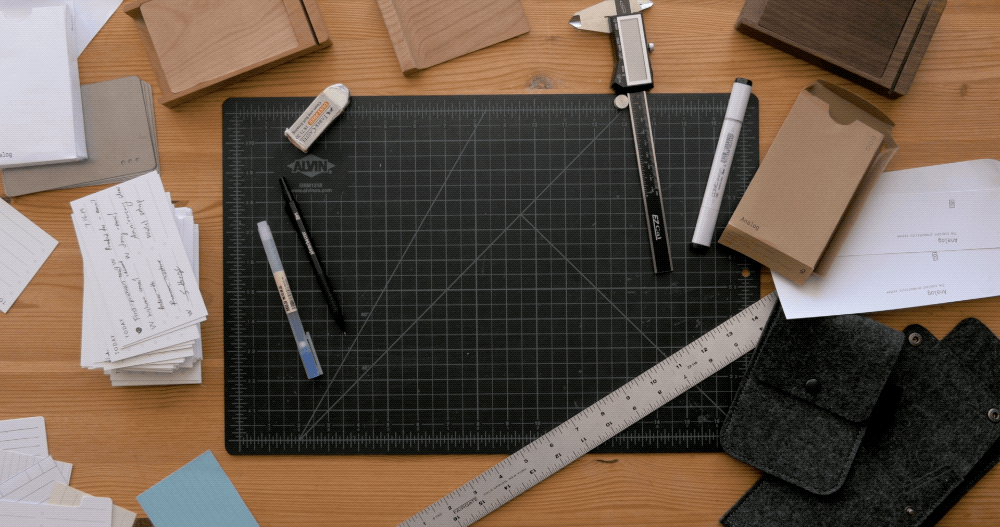
Let's find the right Ugmonk item for you.
Meet Analog — The Simplest Productivity System.
Analog is a physical companion to your digital tools that helps you focus on your most important tasks.
















